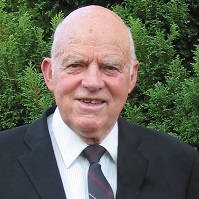Information resources for monitoring, inspecting, and maintaining electric generators
IEEE standards may not sufficiently address grounding issues in rotor, stator windings
There are two, unfortunately common, generator-winding failure modes that the IEEE standards overlook: the fracture of a rotor (field) conductor and the fracture of a stator conductor. This article describes these types of failures, discusses associated negative impacts of them, and recommends corrective actions. more
Generator inspections, failures
Get a grip on stator-core, rotating-field damage mechanisms
Generator stator cores are deceptively simple devices. But there’s a lot that can go wrong with the 10 acres of insulated surface in a typical 200-MW unit. Rotating fields present their set of problems, some of which have led to catastrophic failures. more
Generator stator windings
Don’t fall victim to these precursors of generator failure
Generator stator windings usually have a life of 30 years or more, when not exposed to improper operating conditions and if they don’t carry generic design or manufacturing defects. Unfortunately, neither is the case for many units. Numerous mechanical and electrical deterioration mechanisms can shorten winding life. more
There’s nothing generic about generator failures
Root cause analysis is never easy, but the dearth of true field expertise with generators has led to improper diagnoses, incorrect responses, and significant costs to owners and OEMs, much of which could have been avoided. more
Generator condition monitor critical to avoiding catastrophic loss
Generator monitoring capability historically has been limited, with many common failure mechanisms monitored imperfectly or not at all. Examples of inadequately monitored thermal failure mechanisms on generator stators include stator core lamination insulation failure, cracks developing in stator conductors, and loss of cooling. On field, unmonitored failures that generate high temperatures include cracking of field conductors, shorts, and grounds developing because of field coil/turn distortion. more
Input from monitoring, inspections, tests critical for maintenance planning
There is increasing pressure to extend inspection/maintenance intervals for gas and steam turbines and their generators. One important approach to cycle extension has been predictive maintenance. However, predicting the maintenance requirements for a generator is a difficult task, because relatively little information on its health can be accessed by monitoring an operating unit. more
Options for monitoring generator condition and their limitations
Generator stators and fields historically have been monitored by relatively unsophisticated instrumentation to detect over-current, under-current, general over-temperature conditions, local overheating, abnormal vibration, incorrect pressures, field ground, phase current unbalance, stator single ground, and stator line-to-line fault. more
Maintaining carbon-brush collectors
Carbon-brush collectors have successfully transferred current from excitation power sources to the rotating fields of synchronous generators for over a century. The basic principles of current transfer have remained the same over that time, although numerous improvements have been made in brush and collector-ring materials, brush-holder designs, and ventilation arrangements. more
Full Course: Generator Monitoring, Inspection, Maintenance
Access 10 hours of on-demand webinars free of charge
Topics covered:
Session 1: Impact of design on reliability
Session 2: Problems relating to operation
Session 3: Failure modes and root causes
Session 4: Monitoring capability & limitations
Session 5: Inspection basic principles
Session 6: Test options and risks
Session 7: Maintenance basic approaches
 Clyde V Maughan is president of Maughan Generator Consultants, Schenectady, NY. He has more than 60 years of experience in the design, manufacture, inspection, failure root-cause diagnostics, and repair of generators rated up to 1400 MW from the leading suppliers in the US, Europe, and Japan. Maughan has been in private practice for the last 25 years. He spent the first 36 years of his professional career with General Electric Co.
Clyde V Maughan is president of Maughan Generator Consultants, Schenectady, NY. He has more than 60 years of experience in the design, manufacture, inspection, failure root-cause diagnostics, and repair of generators rated up to 1400 MW from the leading suppliers in the US, Europe, and Japan. Maughan has been in private practice for the last 25 years. He spent the first 36 years of his professional career with General Electric Co.



